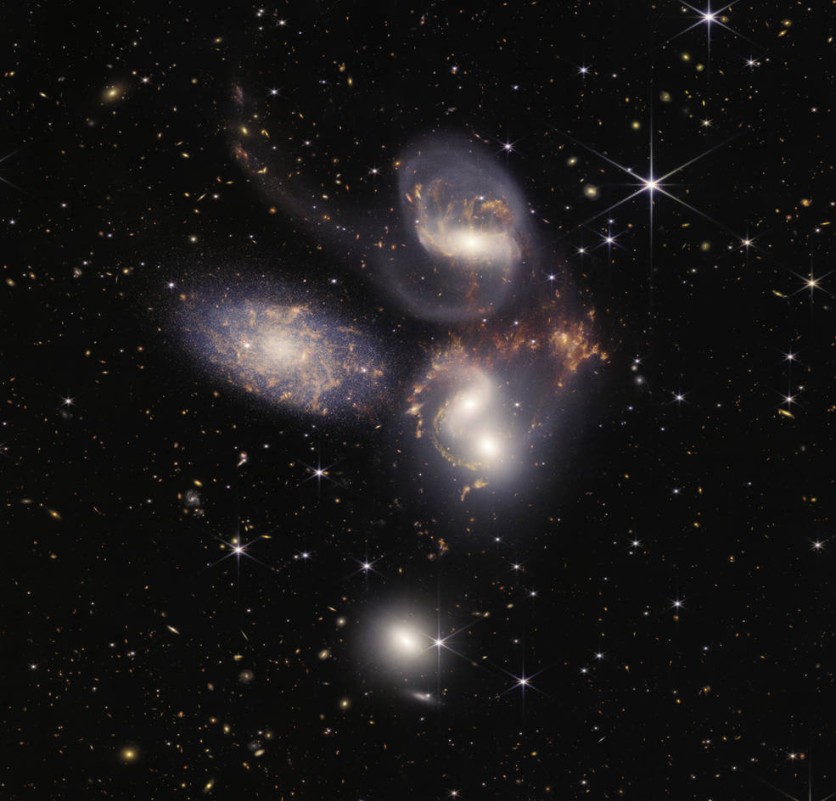Most treasures are filled with gold, but NASA's James Webb Telescope's (JWST) treasure trove is brimming with some of the most distant galaxies ever recorded!
As astronomers sift through the vast amount of data being gathered by the JWST, they are now finding a vast amount of record-breaking faraway galaxies.
In fact, several of these galaxies are older than 200 million years after the Big Bang!

Galaxies In Their Pre-Big Bang State
GN-z11, which scientists observed when it was around 420 million years after the Big Bang and had what astronomers refer to as a redshift of 11.6, was the most distant proven galaxy known before the JWST was deployed.
According to Space.com, redshift is a term used to express how much the universe has stretched the light coming from a galaxy. The further back in time we view a galaxy, the higher its redshift.
A week after the first JWST science photos were made public, astronomers announced the discovery of galaxies at redshift 13 or roughly 300 million years after the Big Bang.
The record is currently being broken by a new wave of scientific discoveries, with some astronomers reporting the discovery of galaxies up to a redshift of 20. If this is the case, we are witnessing these galaxies in their pre-Big Bang state.
But Space.com noted that it would take spectroscopic study, which divides an object's light into a spectrum, to verify the distances of these galaxies. Hence, these discoveries are yet to be verified.
Gravitational Lens
There are various techniques that astrophysicists are employing to find the distance of these galaxies. One of them is through the utilization of a gravitational lens.
The gravitational lens produced by the galaxy cluster SMACS J0723 was used by astronomers under the direction of Haojing Yan of the University of Missouri-Columbia to identify 88 candidates galaxies beyond a redshift of 11, including a few that are thought to be at a redshift of 20.
According to Space.com, these galaxies would be the furthest ones ever discovered once their distances are verified. Additionally, these galaxies would be more than 35 billion light-years away from the Earth today due to cosmic expansion.
Callum Donnan from the University of Edinburgh led a team of astronomers that discovered a candidate galaxy at a redshift of 16.7 or only 250 million years after the Big Bang.
A total of five more galaxies were discovered by the team, all of which have redshifts higher than 12, breaking the previous record for redshift set by the Hubble Space Telescope.
Another team spearheaded by Steven Finkelstein of the University of Texas at Austin found a galaxy with a redshift of 14.3, putting it 280 million years after the Big Bang. The researchers called the galaxy "Maisie's Galaxy" after Finkelstein's daughter.
Read also : NASA James Webb Telescope's New Image Reveals Haunting Details of The 'Grand Design Phantom Galaxy'
Cosmic Babies
These newly discovered high-redshift galaxies can be viewed as cosmic newborns. In contrast to current galaxies, which can house hundreds of billions of stars, these galaxies are merely a few thousand light-years across and only contain tens of millions of stars, according to Space.com.
Astronomers believe that these cosmic babies could be as young as 20 million years old and or less than 100 million years old.
The first galaxies in the cosmos, which might be located at redshift 25 or beyond, have not yet been discovered by scientists. The newly discovered galaxies, however, reflect generations of galaxies that developed after the first ones, giving astronomers the chance to observe their infancy.
Although these discoveries are still subject to verification, it also presents the possibility that sooner or later, we may find an older galaxy than GN-Z11, thanks to JWST's impressive capabilities.
Related Article : NASA James Webb Space Telescope Snaps 'Great Red Spot' of Jupiter With New Breathtaking Photos!
This article is owned by Tech Times
Written by Joaquin Victor Tacla
ⓒ 2025 TECHTIMES.com All rights reserved. Do not reproduce without permission.




